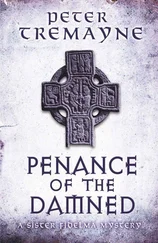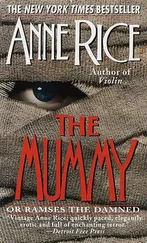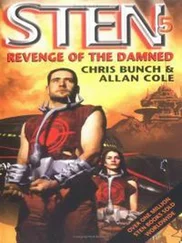“There’s an automatic weapon in here,” Redifer shouted.
“It’s just rifles,” Snafu said.
That was Snafu. He could argue whether the sun came up.
While Snafu and Redifer bickered, Santos found a pipe sticking a couple inches above the bunker, probably the same one where Saunders’s riflemen had dropped in their grenades. Santos started dropping grenades down the pipe as fast as he could pull the pins—and believe me, that was fast. Santos was a little guy but he was quick. When he ran out, Sledge and Snafu passed him their own grenades. We could hear a dull thump each time one exploded in the bunker below. It was hard to see how anybody inside could be alive after that. There was a moment of silence, then two Jap grenades flew out the side of the bunker. Most of us were clear, but Redifer and Porter, who were standing closest, raised their arms to shield their faces just as the grenades went off.
Both were peppered with fragments. Doc Caswell had returned, his face swathed in bandages. He worked over their forearms and soon had them patched up enough so they were able to go on. But I was thinking, This could go on forever. We’re pinned down here. There’s no need in getting my men killed. I motioned everybody back a few dozen yards to a couple bomb craters.
I knew one of the amtracs was idling down by the beach and it had a 75 mounted in a turret. I figured if we could get that amtrac to blast a hole in the bunker, we could make short work of the Japs and finish our business. While I was thinking, four or five Japs scrambled out of the bunker and took off to our right, running for a thicket. They were carrying rifles with bayonets, but they weren’t shooting. What struck me as funny was they were running clutching their pants, which seemed half falling off. We cut them down before they got to the woods. I thought, What kind of army sends its men into battle without belts to hold up their pants?
I told everyone to stand by while I trotted down toward the beach. On my way I found Corporal Charlie Womack, I Company’s red-bearded flamethrower specialist, and his assistant, Private First Class William Lewis. Lewis had a combat shotgun. Womack was broad-shouldered and big as a football lineman. He needed to be—he carried seventy pounds of napalm and nitrogen in tanks strapped to his back. I told him to wait while I got the amtrac. When I had rounded everyone up we rumbled through the brush the hundred yards or so back to the bunker.
“Here’s what I need,” I told the amtrac’s gunner. “Knock me a hole in that thing at least two feet wide to where a flamethrower can get in and scorch ’em.”
We ducked into the bomb craters to watch. The amtrac pulled closer to the bunker, then let loose with three or four deafening rounds that left our ears ringing for minutes afterward. Coral sand and chunks of concrete rattled down on us and the mortars. Seconds passed before we could make out anything through the smoke and dust. But sure enough, the 75 had done its work, opening a hole in the bunker about four feet wide. One shell had gone clean through. We could see through to the other side.
How anybody could survive that blast puzzles me to this day. But a Jap suddenly popped up in the hole, waving a grenade over his head and yelling something. Sledge and a couple others fired and he went down still clutching the grenade, which went off where he lay.
Now everybody was firing. “Get that flamethrower up here, Red,” I yelled. “Everyone else, keep shooting!”
Flamethrowers are a wicked weapon, no doubt about it, but we never had any qualms about using them. They would do the job.
While we poured shots into the hole left by the amtrac, Womack and Lewis moved up to about five yards from the bunker. Lewis twisted a valve on one of the tanks. There was a jetlike whoosh , and a flash of heat and a torrent of orange flame splashed against the concrete and through the hole. We heard screams, and three more Japs came stumbling out the side, wreathed in flames. They went down in a burst of carbine fire, and as they lay writhing on the ground still burning, a couple of us ran forward to finish them off.
We waited for the smoke to clear, then Redifer and I ducked down and entered. Redifer was the kind of man you want with you in a situation like that.
When our eyes adjusted to the dark we could see why we’d had such a hard time digging them out of there. The whole length of the bunker was divided into a series of compartments separated by low openings. The openings were offset one from another so that a blast in one compartment would not reach the men in the adjoining compartments. Each had a narrow slit to the outside, a firing port. They could probably have holed up in there indefinitely, slipping out at night to bayonet us or slit our throats, like they had on Peleliu.
There were weapons scattered everywhere—a machine gun, rifles, grenades. We could smell charred flesh. In one of the compartments we found three or four blackened bodies heaped in a pile. The one sprawled over the top didn’t look quite right. Something about the way he was lying there caught my attention—maybe I caught a slight movement. I motioned to Redifer to stop. Then I gave the Jap a kick in the ribs just beneath his arm. He grunted. I yanked my .45 out of its holster and fired into the back of his head, point-blank.
Altogether, we counted ten dead in the bunker, including the Jap I’d just shot. Seven bodies lay outside. That was seventeen Japs that we knocked out without losing a man, two only slightly wounded. I felt pretty good about that.
For the rest of the day K Company mopped up the west end of the island, including a small hill north of the runway that was full of caves. We dug in late that afternoon at the foot of the hill, two to a foxhole, taking turns sleeping and watching. I shared a bomb crater with the guy who’d dropped the bazooka back on the first day on Peleliu. I took the first hour’s watch, then he took over. The wind came up, carrying the sharp smell of smoke and burnt flesh. Sometime during the night a rain squall passed over. It was his turn to stand watch again and I gratefully fell asleep. For some reason I awoke in a short time. My companion was sprawled against the side of the crater, peacefully snoring. I sat on him and grabbed him by the lapels and slammed his head against the coral. Before he was half awake I had my hands around his throat.
“You son of a bitch,” I said. “If ever I catch you asleep again when you’re standing guard, you’ll never wake up!”
After we got off Ngesebus, I went to Captain Haldane about the incident. I said, “I don’t want that SOB in my platoon. Not if I can’t depend on him.”
We had one more day of fighting ahead of us, on a narrow peninsula jutting a few hundred yards to the northwest, where the Japs had located the big guns that had been giving us such fits. Three of our tanks knocked them out by early afternoon, and our invasion of Ngesebus was over. We’d faced about five hundred enemy defenders, but they were the best soldiers in the Imperial Japanese Army, veterans hardened by several years fighting in China and Manchuria. Our battalion lost forty-eight Marines—fifteen killed and thirty-three wounded. We’d killed 470 Japs. Only twenty-three had surrendered.
Late in the day the Army came across the island and relieved us. We boarded Higgins boats and went down the east coast of Peleliu to Purple Beach, where we would go into reserves. There we found Chesty Puller’s First Marines, still waiting for a ship to take them to Pavuvu.
* * *
As we were starting our rest, the Fifth Regiment’s First and Second battalions were being thrown against the remaining Jap positions on the northern end of Peleliu. Second Battalion mopped up around the phosphate plant. First Battalion attacked and occupied the third of the four hills extending west to east across the island. The next day they turned their attention to the fourth and highest hill, which had a Jap radar on top. By late afternoon they were on the summit. The next day, September 30, they climbed into trucks and amtracs for the ride down the east road to the smaller claw, where they joined us at Purple Beach.
Читать дальше











